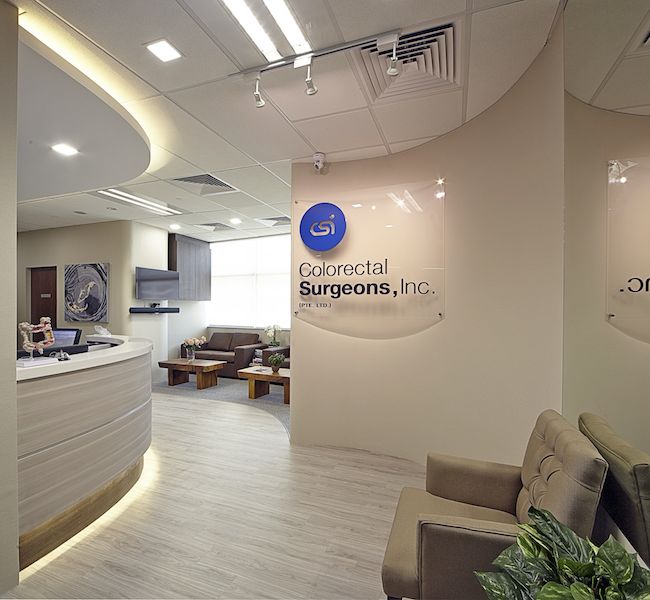Colorectal Surgeons, Inc. offers upper and lower gastrointestinal (GI) tract endoscopic services to patients. Endoscopy allows a direct examination of the GI tract by passing a scope through it. The endoscope is a flexible tube composed of thin fibers of glass attached to a powerful light source, and it transmits light and images to the endoscopist as it goes through the GI tract.
Upper gastrointestinal tract endoscopy, or Oesophago-gastro-duodenoscopy, or OGD is an endoscopic examination that allows your doctor to look inside your upper digestive tract (Oesophagus, stomach and duodenum) using an endoscope. Lower gastrointestinal tract endoscopy, or Colonoscopy, allows your surgeon to look inside your colon.
The Upper GI tract can be affected by many disorders, such as Gastro-oesophageal reflux disease, ulcers, gastritis and cancer. OGD may be recommended to allow your surgeon to determine if your upper GI tract is healthy or diseased. Treatment may also be performed through the endoscope, at the same examination, if required. For example, heat treatment can be applied to a bleeding ulcer to stop the bleeding.
The Lower GI tract (Large Intestine/Colon) is the site of numerous disorders such as haemorrhoids (piles), inflammation, polyps, and cancer. This test has been recommended to you for your surgeon to evaluate symptoms of the lower GI tract or for colorectal cancer screening, to find out if your large intestine is healthy or diseased. If needed, and where technically possible, treatment can also be performed though the colonoscope, at the same examination. For example, a polyp can be painlessly removed through the colonoscope using electrocautery (electrical heat).

